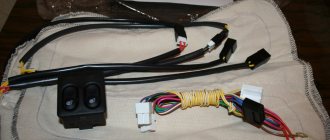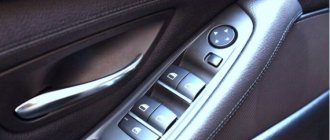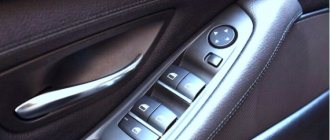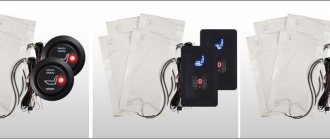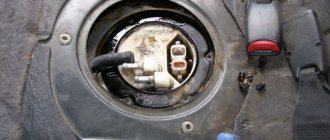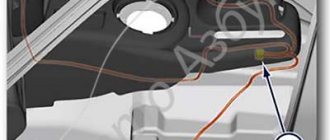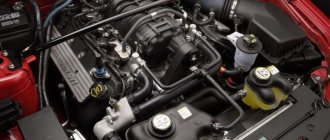The breakdown of heated seats is not one of the most important faults, but it creates a feeling of discomfort and greatly spoils the mood. Especially on an early frosty morning, when the heating devices are still blowing cold air around and you have to get into an icy car. In winter, repair of heated seats in Moscow and other Russian cities is one of the most popular services. Therefore, you want to deal with the situation quickly, and you can do this in two ways: contact a reliable car service center or repair the heated seats yourself.
How to repair heated seats in a car? 3 causes of breakdown and repair methods
How to repair heated seats?
Surely many of us have asked a similar question. Usually it all starts with the fact that one fine day we accidentally come across this problem. It is quite unpleasant to encounter such a nuisance in the cold. The reasons for this breakdown can be completely different, including strong pressure on the seat cushion. To identify a breakdown, the first test can be carried out directly in the car, but as happens, if the problem is not in the fuse, you will have to disassemble the seat. So it will be much more convenient to remove the chair and move it to a place convenient for you, where you can sit comfortably and do business.
Design
The structure is very simple - it is a heating coil, which is divided into two zones (the back and the “seat” itself). MGTF wire is used as a heater. An element is laid out on the mats, on which current is supplied and it is heated. It should be noted that in Chevrolet it is practically built into the mats - glued to the foam rubber. If everything works well, then it will heat and nothing will turn off. If there is a break somewhere, then one side or another will be “cut down”. In my case, both driver and passenger.
Content
How to repair heated seats? It is absolutely clear to all of us that not every owner of a heated car has the time and desire to troubleshoot problems. Many, faced with this problem, simply let it take its course, and with the onset of cold weather, they scold themselves for the lack of desire to fix the breakdown in a timely manner. It's good if the car is still relatively new. Then we just need to take it to a service center under warranty, where everything will be quickly fixed.
What to do if the car ages?
Or is heating simply not provided for your car, but was installed as an addition by a person long forgotten by you? In this case, it is enough to find an understanding electrician. Perhaps it will be your neighbor, relative, or a specialist at one of the service stations.
Anyone who understands this matter will be able to quickly identify and fix the problem, while charging a relatively small fee.
Let's look at the main reasons for this breakdown.
Replacing cables
Some car enthusiasts replace the standard nichrome wires with carbon fiber ones. For an ordinary seat you will need 5-5.5 m. This cable has greater mechanical resistance compared to nichrome and guarantees long-term trouble-free operation.
Technical parameters of carbon cable:
- resistance 1 m – 33 Ohm;
- supply voltage – 7-380 V;
- heating temperature (max.) – 200º C;
- insulation material – silicone rubber;
- diameter – 3 mm.
DIY replacement procedure:
- The circuit is assembled on top of the standard one and is connected in parallel.
- It is recommended to connect carbon fiber to copper wire by crimping them with copper tubes.
- To adjust the degree of heating of the seats, you can use a step-down board with voltage indication.
If you encounter difficulties when repairing the seat heating system yourself, it is recommended to contact service centers or auto electricians.
Fuse
We place our main hopes on it, since replacing it will not be difficult. First, you need to be firmly convinced that this is where the problem lies. To know the truth, just look at him. Most often, in modern cars, fuses are made of transparent plastic. Looking through it, you will see a thin wire, which melts when broken and this is clearly visible to the naked eye. It will be enough to select a suitable fuse and replace the burnt one with it.
My review of the Chinese-made heated cape ZL033
The reliability and quality of the heated cape ZL033 corresponds to the price. The cape served one season flawlessly, warmed up quickly and warmed well, even in severe frosts. You can't expect a long service life from it if you pay $10. If desired, you can extend the life of the cape for another couple of seasons by repairing it. So my review is positive.
But still, I decided not to tempt fate and bought a new, more expensive and reliable one, choosing a heated cape with a heating element made of carbon fiber.
Switch
This is a fairly common problem. The first step is to remove the connector from it (a slight wiggle and pull down is enough), then you need to press out the stoppers that are interfering with us with a screwdriver and the switch will be released. We measure the indicators between the extreme contacts. If the resistance is the same, you will have to disassemble it, this will not be difficult.
Inside we will see a board with contacts; a “slider” will move along them and close the necessary ones. This is what provides different resistance. Most likely, it will be enough to clean them from contamination
and work will resume.
To check if the worst thing has happened, you need to remove the heating connectors. This can be done either without removing the chair, or by removing it and all the upholstery that is in the way. Here everyone comes up with a more preferable option for themselves. How to repair heated seats yourself in this case? In my opinion, it’s easier to disassemble the seat and calmly get down to business, but I don’t want to stress so much without being 100% sure.
To do this, you need to remove the connectors themselves from the gap between the back and the pillow (by sticking your hand in there). When the connectors are outside, be sure to “ring” them. If there is no resistance, it means there is a break. Only after this we remove all the upholstery and look for the problem area.
Mounting block diagram:
When troubleshooting electrical problems, you may also need a wiring block diagram , which can be used to easily find the desired contact or determine how to wire a particular fuse.
It is better to check the fuses with a tester, because on the outside they may look intact, but in fact there may be a break inside. To avoid unnecessary problems, you should always have known working fuses of different ratings on hand.
Do you often encounter electrical problems in a Chevrolet Niva? What do you usually do when troubleshooting? What solutions have you had to use to restore the functionality of devices?
Causes of malfunction
Heating of car seats is carried out from electric heaters, which are built into its structure (in technical foam rubber).
The nickel heating element with a cross section of 1.5 mm is not covered with reinforcing braiding (it has only one), which under some circumstances leads to its malfunction.
Common causes of failure of the seat heating system:
- Excessive load on the side surfaces of the seats (lower part), leading to deformation and rupture of the heating element.
- Damage to the wiring from the outer frame of the seat. This is due to defects in the design of the seats by the manufacturer.
- The heating system fuse has blown. The cause of the malfunction may be a voltage drop in the network.
- Output from standing temperature sensor relay. A possible reason is a manufacturing defect.
- Malfunction of the heating system power supply. The problem may occur due to a manufacturing defect.
Guarantee
I have a car under warranty, so after arriving at the “officials” the verdict was rendered: both lower parts (driver and passenger) burned out.
It is because of this that the heating buttons turn off after about a minute. Of course, everything was changed for me under warranty. And now everything is fine with me, but there is a residue left; according to the experts, this is the “Achilles heel” of Chevrolet cars, and even Opel. Therefore, you need to know how to fix it after warranty.
Removing chairs
In each car and model, this procedure is carried out taking into account the design of the vehicle. Dismantling is mandatory and is explained by the need for correct diagnosis and the quality of subsequent repairs.
- heating switch buttons;
- electrical relays and heating unit;
- heating element.
The procedure for removing the seat (with classic fastening with 4 bolts to the floor):
- The chair moves to the rearmost position.
- The plugs (2 pcs.) are removed from the front parts of the guide rails.
- The bolts under them are unscrewed (2 pcs.).
- The seat moves to the extreme forward position.
- Remove the plugs from the rear parts of the guides (2 pcs.).
- The bolts under them are unscrewed (2 pcs.).
- The seat is removed or the backrest is tilted forward to carry out a “diagnosis” of the contacts of the tens.
- In order to remove the driver's seat, you need to tilt it onto its back in the cabin and disconnect all the connectors going to it (from the Airbag, seat belt sensors, etc.).
- Next, the seat is removed from the car through the front door.
Diagnostic work
- The chips (contact plugs) going from the power supply to the heating elements (2 pcs.) open.
- Use a multimeter (or ammeter) to check the voltage supply to the heaters when the heating button is turned on.
- If there is voltage, then the power button and power supply are working.
- “Ringing” two chips from the upper and lower parts of the seat.
- If one of them does not have a signal indicating the integrity of the circuit, then there has been a violation of the heating element in it.
- If the heaters are working properly, then you need to check the temperature sensor that controls the heating shutdown when the desired temperature is reached.
Repair work
They are carried out in a garage or in a comfortable room with good ventilation and sufficient lighting.
Repair procedure for heated seats:
- All plastic is removed from the seat shell. In some models it is attached to squeezing clamps, in others it needs to be unscrewed using a screwdriver.
- The casing folds back neatly. If it is attached with rings, then you can cut them with pliers or pliers.
- Removing the casing and inspecting the heating element (wire).
- If a burnt or burned-out wire is detected, it must be extended by soldering on both sides into the circuit.
- The spliced section is laid in thermal insulation and then in its place.
- Determining the cause of a wire break. If this happened due to pressure from the seat frame, then the contact point should be made as thin as possible using sandpaper or a file. It is recommended to place a thin gasket (rubber or plastic) on top of the wire and secure it with rubber glue.
- The seat is assembled in the reverse order. Instead of rings removed with pliers, you need to use plastic clamps.
Heated seats do not work: how to fix the problem
With the arrival of winter, all vehicle functions related to heating become especially important. It is difficult to imagine a driver who would enjoy the touch of his back to a cold seat. In such a situation, the surface will take a long time to gain temperature, not to mention the enormous harm to health.
Everything is easier with heated seats. It takes no more than a minute to warm up the surface, after which the pleasant warmth penetrates through clothing and reaches the human body. With this option, winter driving causes fewer problems, including for the health of internal organs. But what to do if seat heating is provided, but for some reason does not work? In such a situation, the only correct solution is to repair the faulty unit.
How to repair a heated seat: all methods
Knowing the reasons for the malfunction is already half the success. To avoid wasting time, figure out why the heated driver's seat is not working. There are several main reasons:
- Burnout of the fuse insert.
- Broken circuit inside the heating tape.
- Damage to the switch or control panel. The first one is usually mounted under the car seat.
The problem with heated seats in many cars is their low level of reliability. For the most part, this applies to budget cars, whose manufacturers save on additional options. It is enough to rest your knee on the chair for the seat heating circuit to be damaged. The result is that the device does not work.
As for expensive cars, such problems occur less frequently. The reason is the use of high-quality and mechanically resistant heating tapes. But even in these cases, malfunctions are possible.
Checking fuses
The efficiency of seat heating depends on the correct operation of the on-board network. That is why, before carrying out the main activities, it is worth starting with the fuse. Please note that the failure of the latter can be determined by another sign - the absence of light on the switch bulbs. Otherwise, we can draw a conclusion about the serviceability of the part.
So, if the heated seats do not work, remove fuse F33 (rated at -15 Amperes). The fusible insert is located in a block located at the bottom of the dashboard (on the right side). If the bulbs do not light up, replace the fuse.
Where is the best place to start repairing?
A breakdown of the driver's seat heating system is a serious problem, so be prepared for the need to dismantle and disassemble the seat. In the simplest cases, you can do without this, for example, in case of cable damage.
If suspicion falls on the switch, then it will have to be removed. Theoretically, this is possible without dismantling the seat, but, in practice, it is better to remove the seat from the cabin. The recommendation is due to the fact that approaches to the switch are difficult. That is why, when removing a part from a fixed chair, you can damage not only the casing, but also the switch itself.
In a situation where the switching device is not working and needs to be replaced, start by removing the connector. To do this, rock the part from side to side while pulling it down. If it does not give way, do not use excessive force. Some manufacturers provide a special type of fastening that provides an individual approach to separation. Do the following - take a screwdriver, get inside the casing and create a little pressure. Now pull the part until it disengages.
There will be three contacts before your eyes. Between left and right, measure the resistance (the contact in the center is responsible for the light bulb). Please note that the switch contains the following elements - a contact group, a board and a slider. The latter's task is to close the contacts using a resistor.
If, when changing the position of the adjusting wheel, the resistance does not change, check the contacts. It happens that heated seats do not work due to grease getting on them. To solve the problem, just clean the contact group (everything should work).
Checking the heating tape for serviceability
If the described recommendations are followed, but the heated driver's seat still does not work, check the heating element for serviceability. The advantage is that you don’t need to dismantle the chair to do the work - just a little knowledge and skill is enough. The algorithm of actions is as follows:
- Tilt the seat back to its maximum angle.
- Insert your hand into the resulting opening and try to find the fastening of the upholstery in the backrest. As a rule, there are three of them - two in the center (left and right) and one at the bottom.
- Remove the upholstery fasteners.
Once the above work is completed, remove the pair of non-functional heating connectors. If necessary, remove all three devices (do not forget to “unfasten” the latches). Afterwards, check them for serviceability. In the diagnostic process, resistance does not play a key role. The main thing is that it, in principle, exists. During the verification process, pay attention to the following contacts:
- Two on the edges and two in the middle.
- Four per pillow.
- A pair of contacts on the back.
Finding a broken heating element
To search for a broken winding wire in a heated cape, you need any pointer tester, multimeter or any electrical circuit integrity dialer. If the multimeter has an audio dialing mode, then it is better to use it. You won’t have to be distracted to take readings from the device. If you are little familiar with how to test electrical circuits, then you can read the site’s article “How to measure resistance, test a circuit with an ohmmeter.”
Since the winding conductor broke due to kinks as a result of mechanical action, you should start looking for a break in the part of the cape that spreads over the seat. To search, you need to connect one end of the device probe to the beginning of the winding laid on the seat; according to the diagram, this is the connection point of the two windings. In the photo above, this is the right side of the cape.
The heating winding wire has a diameter of 0.3 mm and is not covered with an insulating layer. Therefore, a method is available to search for a break using a sewing needle. You need to take a sharp thin needle, attach the second end of the probe to it and pierce the insulation of the heating winding with the sharp end to find the break point.
For a faster search, you first need to divide the length of the heating winding wire into approximately two equal parts and make a puncture in this place - a continuity test. If the chain rings, divide the far part of the winding into two equal parts, and make the next puncture in this place. Mark the puncture sites with a marker to make it easier to find. If the chain does not ring, it means that the break point is between the last two punctures. Divide this area into two parts again and make another puncture.
The method of checking the halves allows you to find the break point by making the minimum possible number of punctures. I found a break through five insulation punctures with an accuracy of 3 cm. Insulation punctures in this case are harmless, since due to the elasticity of the plastic, the holes will be closed and there will be no holes.
Do-it-yourself seat heating repair
When winter comes, the issue of heated seats not working comes to the fore. No driver wants to sit on an icy seat and wait for it to warm up from the heat of the human body.
When the seat heating is on, a minute is enough to feel the warmth coming from the heating elements from under the upholstery. But one small breakdown calls into question the driver’s comfort during winter trips.
Before you begin repairing heated seats, you should be aware of the reasons that can cause this malfunction. In general, there can be only three reasons causing heating burnout:
- faulty fuse;
- breakage of the heating tape inside the structure;
- control panel or switch located on the seat.
Unfortunately, in some car models, heated seats are extremely unreliable. This usually applies to budget cars - just step on the seat with your knee and a break occurs. Of course, expensive cars like Jaguar or Lexus are free from such defects, but low-budget Citroens and Renaults often have unreliable heating bands.
Checking the fuses
The normal functioning of heated seats depends on how the vehicle's on-board network works. Therefore, before diagnosing the device itself, you need to check the fuse.
The standard F33 is rated at 15 amps. This device is mounted in a block, which in most cases is installed at the bottom of the panel where the driver’s seat is. If the bulbs do not work, you will need to replace them.
Where to start restoration work
So, be prepared for the fact that the chair will have to be taken out of the car and disassembled. Of course, there are cases when everything can be solved without complete disassembly, but if, for example, the cable fails, this procedure cannot be avoided.
We will repair heated seats that do not work using the example of a Citroën C4 Picasso.
To check the switch you need to remove it. Theoretically, this can be done without removing the chair. But in practice this is rarely possible to implement. The thing is that approaching the switch in many models is extremely difficult. Therefore, if you remove this spare part right in the cabin, you risk damaging the casing and the device itself.
To remove a heated seat switch that is not working, first remove the connector. In most car models, it is enough to wiggle the element a little and pull it down. But be careful, some car brands install unique types of mounts.
To release the stoppers you need to reach inside the casing with a screwdriver. Then apply some force to make the part come out. There will be three contacts here. You need to measure the resistance on the two side ones. The middle contact is responsible for the light bulb.
If the resistance is the same in all positions of the adjustment wheel, check the contacts. Perhaps they got grease on them. In this case, clean them and everything should work fine.
Checking the integrity of the heating tape
Very often, the reason why the heated driver's seat does not work is due to a break in the heating element. You can check the functionality of this part of the structure without removing the chair, but this will require thin and skillful fingers; the algorithm itself consists of the following stages:
- Recline your back as much as possible.
- You need to stick your hand into the gap between the back and the seat.
- Try to find the upholstery fasteners in the back by touch. There are usually these to the left and right of center and one more at the bottom.
- Remove the backrest trim fasteners.
After you complete these simple manipulations, you will need to remove two connectors for heated seats, which does not work. You can remove all three if you wish. Just press the latches first. To do this, just pull down.
Pull out the connectors and check them. In this context, the strength of the resistance itself is not so important. It is enough that it simply exists. During testing you will need to check the following pins:
- two contacts on the back;
- four per pillow;
- two extreme and two middle.
How to repair heated seats
To repair heated seats yourself, you will need to remove the seats. In reality, it is not as difficult as it may seem at first. It is enough to unscrew the four bolts and disconnect the connector that secures the chair at the base.
The fact is that the seat belt is attached at one end to the seat, the heating of which does not work. You will have to make some effort to disconnect this device. To do this, it will need to be disassembled.
The plastic seat belt cover is secured with special Torx bolts. They have protrusions, so you will need a special screwdriver to remove them. It is in removing the cover that the main difficulty lies, and when this is done, simply carry out the following manipulations:
- remove the clamping bar;
- press the latch;
- pull out the belt buckle.
After this, remove the elements from the frame. Do everything as carefully as possible so as not to damage the design of the heated seats, which do not work.
To remove the pillow, unfasten the clips on the sides. The lumbar support handle for the heated seats will also have to be removed. Unfortunately, without this procedure the device is unlikely to work.
You also need to remove the handle responsible for tilting the backrest. Once you have separated the non-heating cushion from the chair, you can repair it. The process can be divided into the following stages:
- Remove the top right trim.
- Remove the plastic casing.
- Remove the armrest.
- Unhook the straps holding the backrest in place.
- Remove the headrest fasteners.
- Pull the backrest up.
After you have completed all of the above points, you can work directly with the damaged seat heating element.
After that, simply take the Teflon cable and replace the damaged section. First, do not forget to strip the ends of the wires and treat them with tin. Combine the resulting structure into a twist and put on a special cambric.
When the seat heating repair has been carried out, before reassembling, check that all contacts are working. Only then return the chair to its former appearance. For reassembly, you will need glue; you need to use it to connect the foam rubber.
Every driver can repair faulty heated seats. The main thing is to be patient and take time for diagnosis and dismantling. For a beginner, this procedure can take 5-6 hours, for a professional – about two.
The video shows how to repair the seat:
Car seat with heating function
- Types of car spoilers
- Car interior lighting from the cigarette lighter
- Fur covers for car seats: comfort and beauty of your interior
- Auto scanner for self-diagnosis of any car
In addition, the heating method differs depending on the application. Either the entire seat or only the back and lumbar region are heated. At the same time, a universal and high-quality heater must have several available operating modes and automatically maintain the temperature at the required level (as in a standard heater). In terms of types, there are external (covering) or internal (built into the seat structure) resistances. In the first case, installation is simpler - the cover is fixed to the seat with straps and connected to the cigarette lighter.
To install heating inside the seat, you will have to remove the upholstery and the seats themselves, but this installation method is considered more effective and functional.
The choice of seat heating can be opted for the standard version (removed from another car model), or you can take universal kits, for example, Teplodom, Zima, etc., of which there are a lot on the market. The connection of such kits is almost the same, the differences arise only in the design features of the seats on different car models. Thus, installation work is carried out in two stages: installation of heating elements (wires, casings, fasteners, etc.) and correct connection of electrical contacts.
If you choose an additional heater, there will be no problems with installation. Simply attach the heater shroud to the seat, secure with the kit's straps, and connect the wires to the cigarette lighter socket on the dashboard. For aesthetics, the threads can be hidden under the upholstery or directly under the seat. When purchasing outdoor heating kits, you will find detailed installation instructions.
Connecting the heater cable to the cigarette lighter socket
If the heater is built into the seat or under the upholstery to make work easier, it is best to remove the chairs. The removal procedure is different for different car models, but the principle is almost the same everywhere (especially for models of the VAZ family). To remove the front seat with your own hands, you will need:
- Move the seat as far forward as possible and remove the torsion bars,
- Move the seat as far as possible and unscrew the mounting nuts,
- Using a special wrench, unscrew the two front and rear mounting bolts and remove the seat from the grooves,
- Disconnect the connectors under the seat if it is equipped with power steering or an airbag.
After removing the seat, you must carefully remove the upholstery. Depending on the type of coating, removal has its own nuances. If the sheath is made of fabric, it simply rises up from the front, and the work should be done as carefully as possible. If defects are found (for example, deformation of the foam), at this stage you can glue or replace the damaged elements.
However, not all car models will be easy to remove. Let us examine in detail how to remove the casing and glue the heating element using the example of Japanese cars (Mazda, Toyota, Nissan).
Removing the car seat cover
When the chair is completely removed, you need to turn it to the side and remove the handles (or buttons) to adjust the tilt and swivel of the backrest. Next, you need to remove the plastic plugs and unscrew two or three mounting bolts. After this, the seat should be turned over and the fastenings at the bottom unscrewed. The pad itself is fixed with steel rings around the perimeter; they can be peeled off with a screwdriver or removed in another way, but be careful, as they may be needed when reinstalling the pad. If the rings are damaged, plastic straps can be used.
After removing the steel rings, the sheathing is carefully moved from top to bottom (from base to back) in the area required to install the heating element. Then try on the heating coat around the perimeter first. If a standard heating kit is used, the dimensions will fit exactly; If you purchase a universal kit, it is recommended to measure all dimensions in advance so that the heater does not protrude and interfere with comfort. Remove the adhesive backing from the heating element, straighten the casing and tighten the clamps. Now you can start connecting contacts for proper heating operation.
Connecting heating and buttons to the car's electrical system
Every motorist should have a universal device for diagnosing his car.
You can read, reset, analyze all sensors and configure the car’s on-board computer yourself using a special scanner.
Before connecting all cables, they must be done under the seat upholstery (they can be done under the foam base). The wire is inserted into the area of the armrest or central tunnel; if button illumination is also provided, then there will be two wires; the rest is transferred to the vehicle diagnostic unit (position depending on the vehicle model). Before wiring the contacts, you must drill holes for the heating adjustment button (if standard holes are not provided). After drilling, install the buttons, not forgetting to install fuses on the contacts.
Connecting heating cables under the housing
The wires are connected along three 12 V circuits, the corresponding wire is located in the fuse block, in the backlight circuit (ibid.) and in the ignition circuit (on some universal models, the connection is made to the cigarette lighter socket without the need for di to connect a button). You can check how the heating element works with a multimeter. Generally, universal heaters come with a detailed electronic diagram that you can follow during installation. When connecting standard heating, the vehicle connection diagram can be found in the operating instructions.
Checking the operation of the heating element with a multimeter
After connecting, additionally insulate the contacts (you can use electrical tape or corrugation). To prevent the cables from sagging, they can be secured with ties to the base of the front seats. After this you can test the connection. If everything is correct, then the heating will only work when the panel is on (if not, check all the contacts again, otherwise the battery will be discharged in one day).
